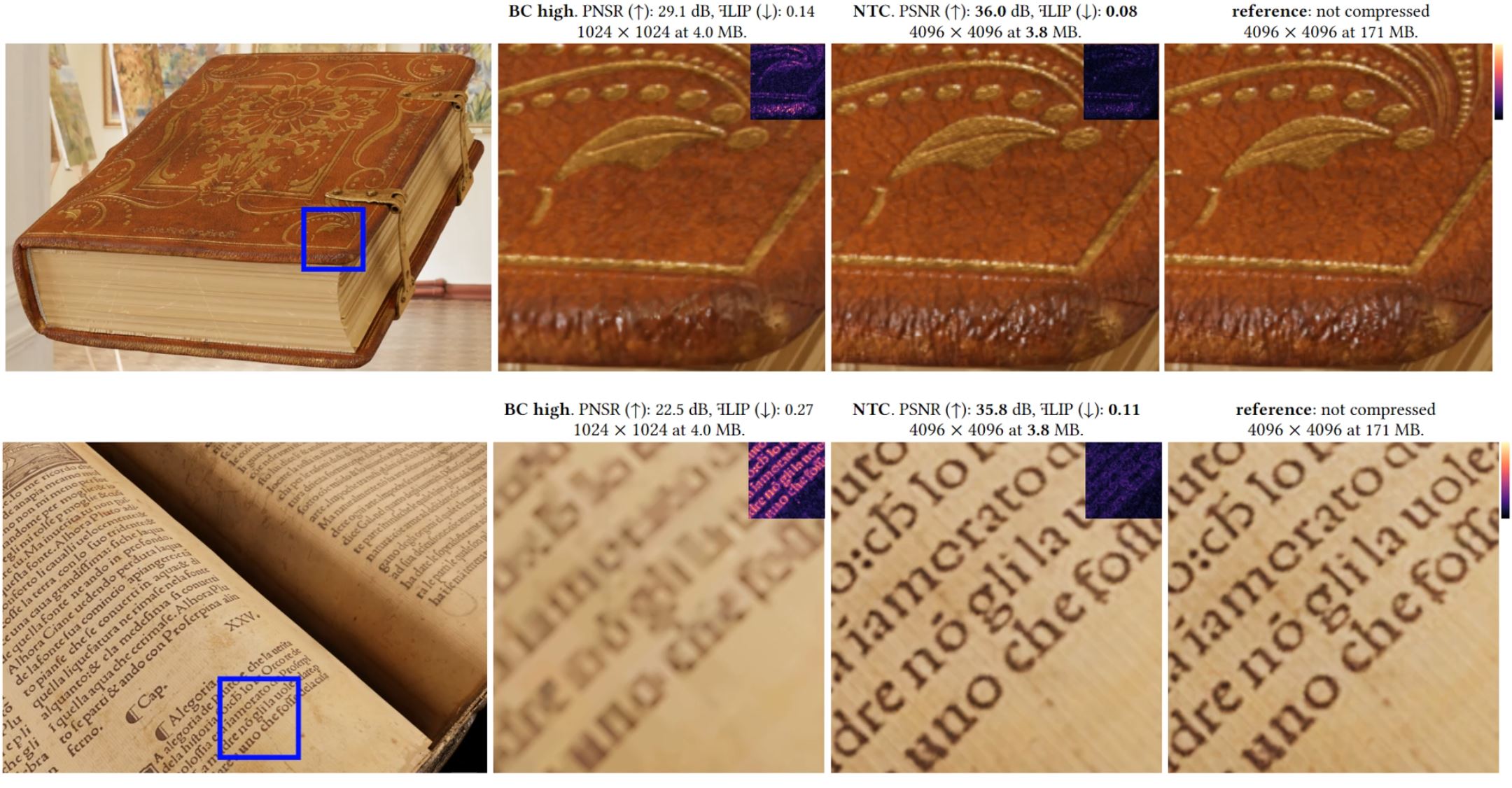Read from tweaktown:
Called 'Random-Access Neural Compression of Material Textures'
The Neural Texture Compression (NTC) aims to tackle the spiraling requirements for high-res textures, allowing them to better fit into the available RAM. We're told that it delivers 16x more texels than Block Compression or BC (standard GPU-based texture compression).
In practical terms, though, a 4K render takes 1.15ms which isn't quick enough - compared to 0.49ms as measured on an RTX 4090 - so it'll need to be a good deal faster than this for NTC to work well enough to be usable.
Wronski a researcher at Team Green who's part of the project.
admitted that:
"This requires future work, but it will only get better, and I'd argue that it is already in a practical realm."
So, given some time and refinement, this could be a key technology for achieving better textures. Or rather, fitting high-res textures into more modest VRAM loadouts.
Called 'Random-Access Neural Compression of Material Textures'
The Neural Texture Compression (NTC) aims to tackle the spiraling requirements for high-res textures, allowing them to better fit into the available RAM. We're told that it delivers 16x more texels than Block Compression or BC (standard GPU-based texture compression).
In practical terms, though, a 4K render takes 1.15ms which isn't quick enough - compared to 0.49ms as measured on an RTX 4090 - so it'll need to be a good deal faster than this for NTC to work well enough to be usable.
Wronski a researcher at Team Green who's part of the project.
admitted that:
"This requires future work, but it will only get better, and I'd argue that it is already in a practical realm."
So, given some time and refinement, this could be a key technology for achieving better textures. Or rather, fitting high-res textures into more modest VRAM loadouts.


